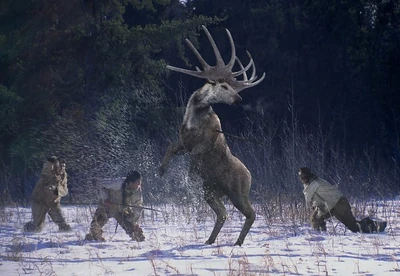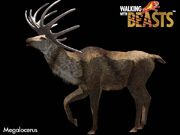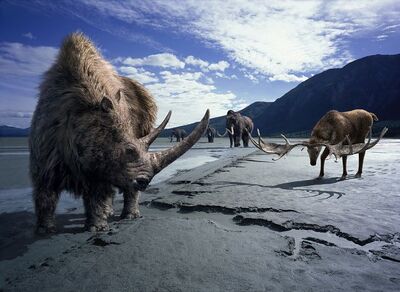

Megaloceros
Megaloceros, otherwise known as the Giant Deer and Irish Elk, lived during the Pleistocene to Early Holocene in Europe and Asia. There have been several subspecies of Megaloceros beginning in the Early-Mid Pleistocene including M. obscurus, M. antecedans, M. pachyosteus, and M. savini. The subspecies "Megaloceros Giganteus" was the largest form of deer of all time, dwarfing all modern species (including the other subspecies) by far and the most well known subspecies in the genus. It had an antler span of a staggering 3.8 metres wide - each antler larger and heavier than a man. It stood majestically at 2 metres at the shoulder alone, and was 3.5-4.5 metres long. It could have weighed a tonne. Even so, it would have been a fairly agile beast, able to dodge most carnivores. It lived from around 1 Million Years Ago - 8,000 years ago with the last subspecies M. cazioti (which lived in the Mediterranian) 5,080 years ago. It lived so very near to our time, it is rather sad that we in the 21st Centurt cannot now see it in the wild. Humans though, have been blamed for its overhunting and final extinction. Though referred to by many as the 'Irish Elk', it was no limited to Ireland at all, in fact being more common in England, Belgium, France, Germany and elsewhere in Europe and it was not a true elk but a deer. It would have been a browsing herbivore, living in male led herds - with a single alpha male controlling a hareem of females, with subordinate males in tow. Males would have locked antlers in exhausting contests of strength to decide which male would have the hareem of females. It is possible to suggest that humans may have stalked herds, and waited until they had finished rutting, then attacking a vulnerable and exhausted individual (possibly the loser).
Description[]

Ice Age Megafauna, including the Giant Deer, 30,000 Years Ago.